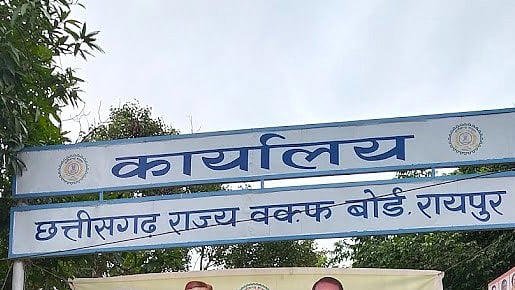Over ₹500 crore worth of Waqf properties have been found to be under illegal occupation across various districts of Chhattisgarh. The information surfaced following a detailed survey and review conducted by the Chhattisgarh State Waqf Board in collaboration with the state minority welfare department. The findings have sparked concern among community leaders, religious institutions, and the public over the safeguarding of assets meant for charitable and religious purposes.
Waqf properties, donated by individuals for religious or philanthropic use, are considered inalienable under Islamic law. These properties are meant to serve communities by funding schools, orphanages, mosques, and community welfare initiatives. However, in Chhattisgarh, a large chunk of these properties has allegedly been encroached upon by private individuals, commercial entities, and in some cases, even government departments.
According to official estimates, approximately 1,200 Waqf properties across the state have been identified as being either partially or fully encroached upon. This includes prime land parcels in urban centers like Raipur, Bilaspur, Durg, and Rajnandgaon, which have witnessed rapid development in recent years. The current market value of these illegally occupied properties is estimated to exceed ₹500 crore, highlighting the massive scale of the problem.
Officials from the Waqf Board revealed that many of the encroachments date back several decades, with unauthorized constructions being carried out in the absence of proper monitoring mechanisms. Some individuals have even managed to secure property documents or lease agreements through alleged manipulation and corruption, making it difficult for the Board to initiate immediate legal action.
In response to these findings, the Chhattisgarh Waqf Board has begun preparing legal notices and gathering documentation to reclaim the encroached lands. A special legal cell has been formed to pursue litigation in high courts and Waqf tribunals to regain control over the properties. The Board is also seeking cooperation from the state revenue and municipal departments to facilitate the eviction of illegal occupants.
The issue has gained further political traction, with opposition leaders demanding a thorough probe into how such large-scale encroachments were allowed to take place. They allege that political patronage, bureaucratic negligence, and lack of coordination among departments have allowed land grabbers to act with impunity. Some political commentators have also linked the issue to broader debates surrounding the reform of Waqf administration and transparency in property management.
Religious and community leaders have expressed deep concern over the revelations, noting that Waqf properties are not merely real estate but sacred trusts. These assets are meant to serve the socio-economic and spiritual needs of the community, and their misuse or illegal occupation is a betrayal of that trust. Many have called for stronger legal frameworks and digitization of property records to prevent future encroachments.
Activists and legal experts have also pointed to systemic challenges in Waqf property management across India. A lack of digitized records, under-resourced Waqf Boards, and prolonged legal disputes often result in the erosion of Waqf assets. In many cases, local authorities are either unaware of the Waqf status of certain lands or fail to act promptly when encroachments occur.
In light of the situation in Chhattisgarh, experts are urging a state-wide audit of Waqf properties with full transparency. Suggestions have been made for the use of satellite mapping, digital registration, and a central monitoring dashboard to oversee property use and prevent unauthorized occupation in the future.
As the Waqf Board of Chhattisgarh prepares for legal battles and administrative action, the larger question remains: how can sacred trusts and community assets be better protected in the face of urbanization, political influence, and legal loopholes? The coming months are expected to see an escalation in both legal and political efforts to reclaim these properties and restore their intended use for community welfare and religious observance.
The Chhattisgarh Waqf property crisis is not an isolated incident but rather a reflection of a systemic issue plaguing several Indian states. It serves as a wake-up call for authorities to act decisively in protecting public and religious assets, ensuring they serve the purpose for which they were originally endowed.

